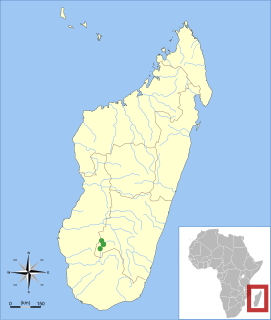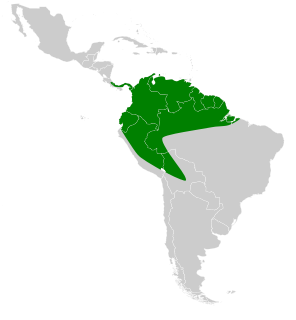
The big brown bat is a species of vesper bat distributed widely throughout North America, the Caribbean, and the northern portion of South America. It was first described as a species in 1796. Compared to other microbats, the big brown bat is relatively large, weighing 15–26 g (0.53–0.92 oz) and possessing a wingspan of 32.5–35 cm (12.8–13.8 in).

Kobayashi's bat is a species of bat. An adult Kobayashi's bat has a body length of 6.0–6.3 centimetres (2.4–2.5 in), a tail length of 4.6–4.8 centimetres (1.8–1.9 in), and a wing length of 4.5–4.7 centimetres (1.8–1.9 in). The species is found only on the Korean Peninsula; it has been suggested that it may be a local form of Eptesicus bottae, Botta's serotine.

Eptesicus is a genus of bats, commonly called house bats or serotine bats, in the family Vespertilionidae. The genus name is likely derived from the Greek words ptetikos 'able to fly' or petomai 'house flier', although this is not certain.
Bobrinski's serotine is a species of vesper bat. It can be found in Iran and Kazakhstan.
Botta's serotine is a species of vesper bat, one of 25 in the genus Eptesicus. It is found in rocky areas and temperate desert.
The sombre bat is a species of vesper bat. It is found only in India. Its natural habitat is subtropical and tropical moist montane forests.

The Atacama myotis is a species of vesper bat in the family Vespertilionidae. It is found in Chile and Peru, an example ecoregion of occurrence being the Chilean matorral.
The inland forest bat is a vespertilionid bat that occurs in central and arid regions in Australia. They were first described in 1987, published in a review of poorly surveyed microbat populations. A tiny flying mammal, whose body is around twelve millimetres (½ inch) long, that occupies small cavities in trees and buildings while roosting. The nocturnal activity is foraging for insects, typically moths.
The yellow-lipped cave bat is a vespertilionid bat which only occurs in the Kimberley region of northwest Australia. The bat was first captured at Tunnel Creek in 1958 and a description published nearly twenty years later. Aside from observations of their physical characteristics, a preference for caves, and hunting insects over streams, little is known of the species.
Finlayson's cave bat is a species of vespertilionid bat found only in Australia.

Taddei's serotine is a species of medium-sized bat belonging to the family Vespertilionidae. It is restricted to the Atlantic Forest of southern Brazil.

The little black serotine is a species of insectivorous vesper bat. It is found in Colombia, Ecuador, Peru, Venezuela, Bolivia and Brazil at elevations from 100 to 3300 m.

The Isalo serotine is a vespertilionid bat of Madagascar in the genus Laephotis. It is known only from the vicinity of the Isalo National Park in the southwestern part of the island, where it has been caught in riverine habitats. After the first specimen was caught in 1967, it was described as a subspecies of Eptesicus somalicus in 1995. After four more specimens were collected in 2002 and 2003, it was recognized as a separate species. Because of its small distribution and the threat of habitat destruction, it is considered "vulnerable" in the IUCN Red List.

The Mistratoan yellow-shouldered bat, is a species of leaf-nosed bat indigenous to the Cordillera Occidental, in the Mistrato municipality in Risaralda, Colombia. Since existing information derives exclusively from the holotype, the status of the species, its environmental requirements, and the trend of the population are unknown.

The Chiriquinan serotine is a species of house bat.
The slender broad-nosed bat is a species of bat in the family Phyllostomidae. As a phyllostomid bat, it is characterized by a narrow uropatagium which is fringed with hair; a white dorsal stripe; large inner upper incisors convergent at the tips; and three upper and three lower molars. It is found in eastern Colombia and Ecuador, north-eastern Peru, and Venezuela. It is closely related to Platyrrhinus incarum and Platyrrhinus fusciventris.

The meridional serotine is a species of bat native to the Iberian Peninsula, Morocco, Algeria, Tunisia and Libya.
The Anatolian serotine bat is a species of bat found in the Middle-East, Cyprus and Rhodes Island, Greece.
Ognev's serotine is a species of vesper bat found in western and central Asia.











